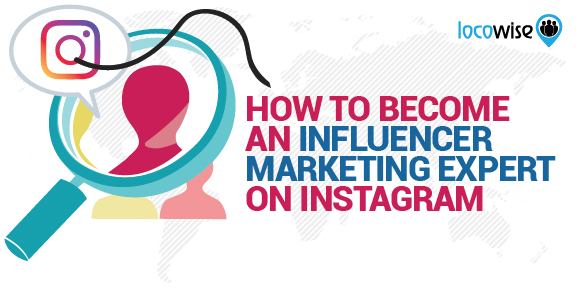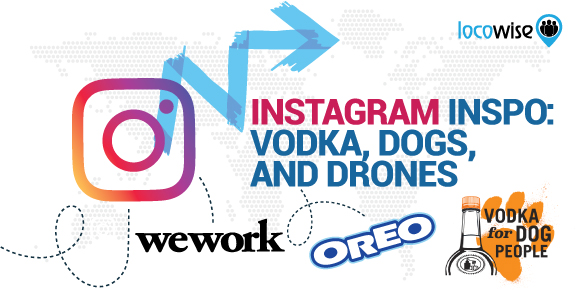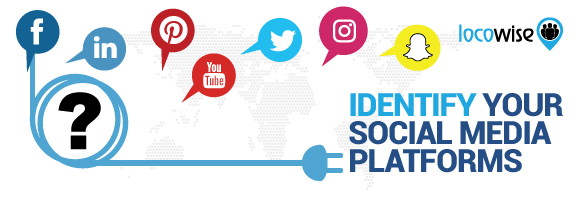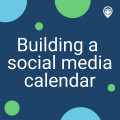10 Tips To Help You Successfully Promote Your Blog Content On Social Media
Sahail Ashraf posted on 19 May 2017
You have an idea. You produce a great article and hit the publish button. Is that enough?
The answer to that question is most definitely NO. It’s not enough to simply publish content and wait for the traffic to find it. You need to push it out and get the traffic coming in your direction.
How do you do that? Social media of course! Social media platforms are a great way to promote blog content. It’s where the audience is, it has high engagement rates and it’s a very cost-effective method of promotion.
If you’re struggling to get traffic to your content, here’s some tips on how to successfully promote blog content on social media.

Tease your readers
Don’t just copy and paste the blog title and URL into a Facebook post and stick it on your profile. Tease your readers with quotes from the article. Make them curious so they’ll want to know more.
“We are bombarded with content and blog posts daily from millions of companies so to stand out from the crowd and get noticed, have a catchy caption or headline that will make people stop scrolling and start reading,” says marketing executive Teresa Walsh.
Harper’s Bazaar did a great example of this when they teased their piece on the “Met Gala’s Best Dressed”. On their Facebook page, they shared a link to the piece, but underneath they included a short video which included a couple of fashion highlights from the event. A nice way to entice the audience to view the entire piece.
Influencer input
When planning a blog post, reach out to industry experts and get their opinions and tips. Include this expertise in your content and let them know when it’s published.
These experts are more than happy to share this content with their network (as they’ve been featured in it!). This method helps your content to reach a much wider audience.

Create different formats
“One of the best tips for sharing blog content via social media is to create 2-3 different formats [video, still image, text with link] for each blog post that you produce,” says Maree Jones, publicity and communications specialist.
“Each time that you share one of these formats, link back to the original post,” she adds.
This approach does a few things: first it gives you data as to the types of content that your audience is most likely to engage with. Secondly, it pulls in maximum potential traffic to your posts. Lastly, it fixes a big mistake that many of us are guilty of – not sharing (or forgetting to share) their blog posts more than once across social media channels.
Not only can this mistake cost you potential readers and higher traffic, but it can also create more work for you in the long run.

Timing
Set a schedule to post at the most optimal time. You want your content to reach as many people as possible, therefore you need to post your content when your audience is most active on the platform.
This way your followers will see it and engage with it. For example, between 12pm and 3pm or between 7pm and 9pm.
Buzzfeed Tasty choose their times wisely when posting their content.
A recipe for chicken tikka masala was posted on their Facebook at 17:00 – just in time for dinner.
A recipe for sweet soy chicken wings was posted on their Facebook at 17:00 – again, a time when many people would be getting things ready for dinner.
The lesson learned here? Post your content at times when it will matter.

Go visual
Social media is very visual (Instagram and Snapchat are purely visual). That means images with your content are really important. You need to draw the user’s eye to your content using a relevant image. Create your own [if you can], if not use stock images.
“The reader’s eye goes to the image first, so I recommend adding a short, catchy headline to the it,” says Kristie Forsman, director of digital marketing at The Preferred Reality.
“Most people skip over the caption text, but when it’s directly on an image you have a better chance of it being seen and therefore, getting clicks,” she adds.
When sharing an article, include an image that matches each of the points addressed in that article.

Post often
“You should be posting the same piece of content multiple times throughout the day and/or week,” says Nicole Silver, PR and digital marketing specialist at TrustedProsInc.
“People will never see a piece of content that you post only once. To capitalise on the whole audience, you need to keep posting your content.”
Use hashtags
Use hashtags that are relevant to the topic you have written about.
“This makes the social media post more likely to reach people who would be interested in reading the article,” says Steve Pritchard, search content manager at Giffgaff.
A good example of hashtag usage was done by Red Bull during their #PutaCanOnIt campaign. The energy drink company started this campaign after coming across a photo where the photographer is seen holding a Red Bull can above a trademarked Red Bull car that was missing the usual giant can of Red Bull.
The brand then encouraged others to recreate images with the same concept.
The campaign was successful because the hashtag allowed people from all over the world to connect with others who shared their love for the brand and show their creativity.
That’s the power of using a hashtag – it connects readers to your content and to others who like that type of content. It’s a tactic you should be using in all your content projects.
Headlines are important
Your content might be great but if you don’t have a headline that grabs the reader’s attention, your content won’t get the views it deserves.
The headline is your first [and in many cases only] chance at getting people’s attention. People are busy, the headline helps them decide whether or not they’re going to read a piece of content.
Next time you’re writing an article, take the time to create a better headline. Keep in mind that headlines must be:
Clear: the headline must not be confusing. It should tell the reader exactly what the article is about.
Relevant: The headline should relate to the rest of the article.
Short: Keep your headlines short and to the point.
Examples of headlines that work:
BBC loses rights to Great British Bake Off – This headline works because it’s short (42 characters) and gets straight to the point. It tells readers what the article is about without giving away too much. Readers will click through to get the details. What happened? Who will broadcast the popular show now? Will the format of the show stay the same? Will it have new hosts?
10 Lifestyle Changes That Will Make You Less Stressed – This headline works because it promises to solve a common problem, so people will click through to see what’s on offer. It also prepares readers for what they’re getting, 10 points of information.
Why women are better bosses than men – An outrageous statement, you might say, fuelling the battle between sexes – but readers will click despite themselves. They’ll wonder why the author is writing this post. And if there’s any truth behind statement. Mission accomplished!
Funny, honest copy
“I’ve always enjoyed websites that dare to show their personality,” says social media manager, Samantha Schwartz.
“I like walking the fine line between professional and conversational content. Conversational content engages your audience by letting them know you’re one of them but with something to offer.”
Oreo is one of the best brands on social media. They know the definition of humour and are using their social media accounts to give their audience a taste of it.
They understand their audience which is why their feed showers people with positive vibes [and at the same time, encourages them to eat their biscuits in a variety of ways].

During 2013 Super bowl, the power went out in the third quarter and delayed the game by over 30 minutes. Oreo’s response?
Their strength lies in visual content and they are conquering Instagram with it.
What can others learn from Oreo? Oreo uses humour to connect with their audience. You can be funny and at the same time, be professional, you just need to learn the balance between the two.
Share on the right platform
With so many social media sites, it can be difficult to choose which platform to post your content to. It’s a good idea to have accounts on various sites as different social media platforms mean different things for different users. For example, Facebook for news and Snapchat and Instagram for visual content.
Spend time getting to know your audience and finding the social media platform where you’ll most likely engage with them the most.





